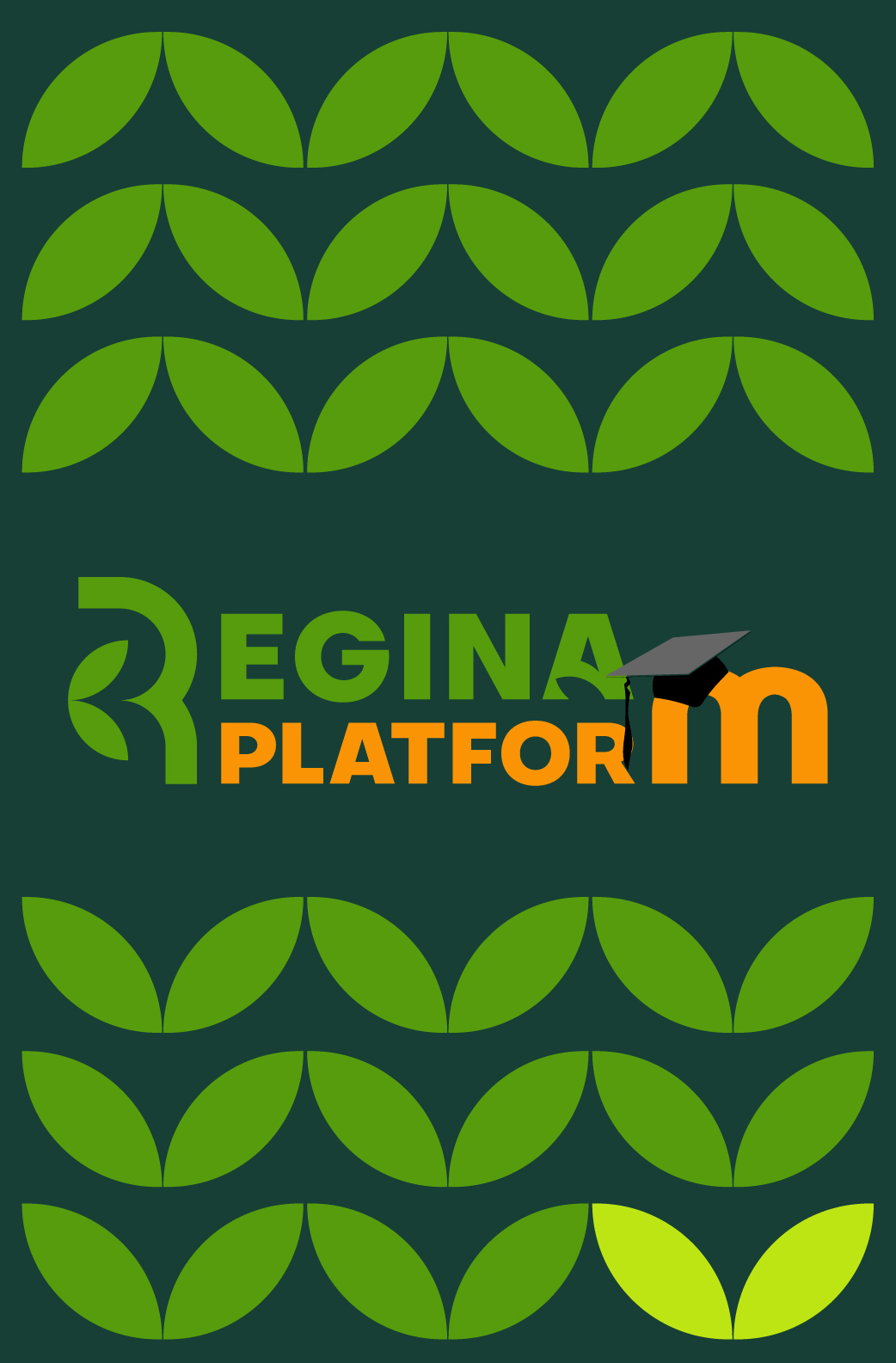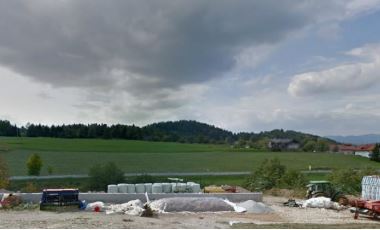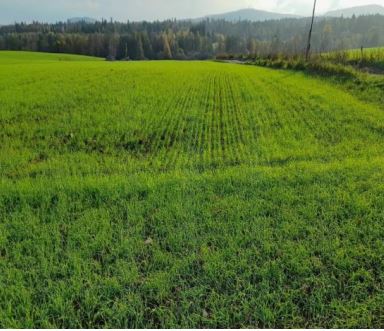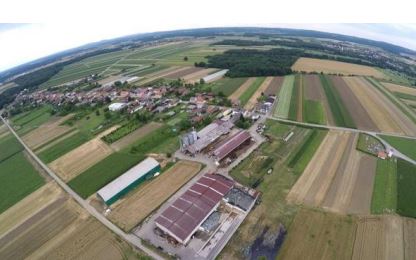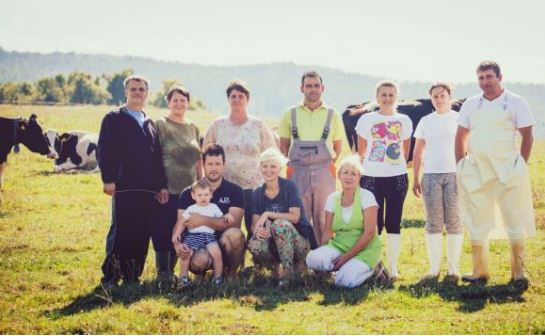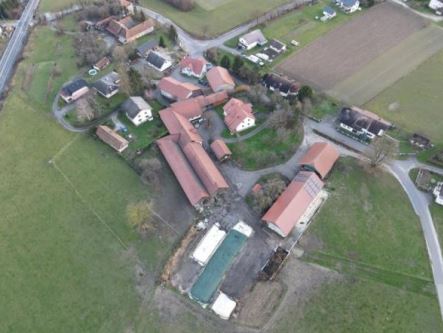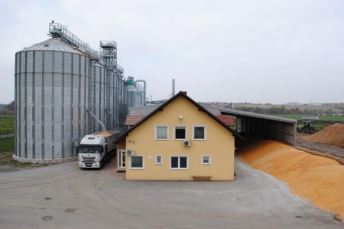Categories
Slovenia
Farm Debeljak: Navigating Regenerative Agriculture
Success Story
Farm Debeljak, led by Nastja Debeljak in Slovenia's Osrednjeslovenska region near Velike Lašče, encompasses 61 hectares. Nastja, an agricultural school graduate and current university student, manages breeding, milk processing, and crop production.
The farm is firmly rooted in regenerative agriculture practices, bolstering production optimization. Through minimal cultivation, three-year crop rotations, and a green floor approach, crops like wheat, barley, and alfalfa thrive.
Nastja's inspiration for embracing regenerative methods stems from elevated production costs. Gaining insights from farm visits in Slovenia and abroad and online research, she ardently pursued regenerative insights, despite lacking financial support for her efforts.
The merits of regenerative agriculture, such as humus preservation and enriched soil fertility through green flooring, resonate with Nastja. Yet, challenges surface in the form of crop-threatening wildlife. Fencing solutions emerge but entail expenses.
With satisfaction in their methods, Farm Debeljak pledges commitment to regenerative agriculture. While challenges persist due to uncontrollable factors like wildlife, the farm remains steadfast in its approach, symbolizing resilience in nurturing sustainable practices.
LABELS: Slovenia, dairy, crop-production
Farm Penko: Nurturing Regenerative Agriculture
Success Story
Farm Penko, guided by owner Matej Penko, is a promising entity in Slovenia's Notranjska region near Postojna. Spanning 53 hectares, the farm's pursuits encompass agriculture, cattle breeding, and nascent regenerative practices.
Matej, a young farmer with formal agricultural education, steers the farm's journey towards regenerative agriculture. A recent adopter, he seeks to bolster his understanding in this sphere, acknowledging gaps in his schooling.
In his two years of regenerative practice, Matej implements minimal tillage, green flooring, hedge preservation, and a three-year crop rotation. Barley, grass clover mix, hay, and alfalfa flourish under these principles. His impetus arises from cost reduction and hedge maintenance incentives advised by agricultural consultants. Ministry of Agriculture support further bolsters his efforts.
Benefits of regenerative agriculture, including reduced soil cultivation costs due to the absence of plowing and financial support, are evident to Matej. However, challenges arise from heavy soil, limited arable space, and crop-damaging wildlife. Matej's solutions involve creative land consolidation and diligent soil enrichment through manure application.
Farm Penko's trajectory remains fixed on regenerative agriculture, driven by its tangible benefits and Matej's contentment with this evolving farming methodology.
LABELS: Slovenia, livestock, crop-production
Farm Štefan Cigüt: Driving Regenerative Agriculture in Pomurska
Success Story
Farm Štefan Cigüt, led by Štefan Cigüt Jr., shapes agricultural excellence in Slovenia's Pomurska region near Moravske Toplice. Encompassing 380 hectares, the farm excels in crop cultivation and livestock breeding.
Štefan Cigüt Jr.'s dedication to regenerative agriculture spans a decade. The farm's diverse produce includes corn, wheat, barley, sunflowers, soybeans, alfalfa, clover and grass mixtures, triticale, and pumpkins.
Regenerative principles were adopted to amplify soil fertility, bolster structure, and augment humus content. Vitality preservation and sustainable farming practices spurred this transition. Štefan's education on regenerative agriculture via the Slovenian Association for Conservation Agriculture enriched his approach.
The farm thrives with continuous plant coverage or residue, culminating in enhanced soil quality and heightened organic matter in the upper strata. Minimal soil interventions lead to reduced machinery passages and minimized compaction—a cornerstone of their success.
Štefan underscores that regenerative agriculture's impact extends throughout the agro-ecosystem. Permanent practice, implemented over years, ensures its effectiveness. The farm's satisfaction with these techniques underscores their adaptability to agricultural needs.
Farm Štefan Cigüt exemplifies the harmonious synergy of progressive practices and farming sustainability, marking a transformative journey in the Pomurska landscape.
LABELS: Slovenia, livestock, crop-production
Farm Žgajnar: Leading Organic and Regenerative Agriculture
Success Story
Farm Žgajnar, overseen by Tone Žgajnar in Slovenia's Primorsko-Notranjska region, covers 316 hectares dedicated to animal husbandry and cereal cultivation. The farm's focus on organic practices is underscored by its milk, beef, and pork production, predominantly via wheat fields using regenerative techniques.
Embracing regenerative agriculture for over a decade, the farm employs methods such as direct sowing, crop rotation with grass clover mixtures, seeding grasses, and preserving biodiversity through unmown meadow sections. Green fertilization is practiced alongside late mowing for seed production.
Tone Žgajnar, reflecting on the journey, cites the pivotal reasons for adopting regenerative practices: heightened soil fertility, diminished humus leaching, and lower production costs. The transition was propelled by experiential learning from professional excursions, leading to the successful implementation of regenerative techniques.
The positive outcomes of regenerative practices are evident. Over the decade, soil organic matter has increased, contributing to sustainable agricultural practices. Although challenges persist with weed management due to organic principles, the farm remains steadfast in its commitment to regenerative methods.
Despite the absence of financial support for regenerative agriculture, the farm's success and satisfaction serve as motivation for its continued application. Farm Žgajnar stands as a testament to the tangible benefits of regenerative and organic farming, exemplifying the harmonious balance between sustainability and productivity.
LABELS: Slovenia, livestock, dairy, organic
Organic Farm Žnideršič: Pioneering Sustainable Agriculture
Success Story
Organic Farm Žnideršič, led by Toni Žnideršič, exemplifies sustainable farming in Slovenia. Spanning 80 hectares, the farm focuses on regenerative practices for milk, meat, cereals, viticulture, and forestry.
Farm Žnideršič employs regenerative methods that limit soil interference, resulting in improved soil health over two decades. Utilizing circular harrows and a specialized loosener, the farm eschews plowing in favor of minimal cultivation. Winter crops like clover, corn, triticale, barley, and more are sown for greening and ground cover, forming a comprehensive rotation. Organic farming principles guide their fight against weeds through crop rotation, ensuring continuous vegetation cover that serves both animal feed and soil health. The farm's approach reduces costs, fosters environmental benefits, and sustains organic quality.
Toni Žnideršič's commitment to learning and innovation drives the farm's success. Challenges like mechanization gaps are met with persistence and observation. As a beacon of sustainable agriculture, Žnideršič harmonizes tradition and innovation for a promising farming future.
LABELS: Slovenia, crop-production, organic
Farm ŽIPO Lenart: Leading Regenerative Agriculture in Slovenia
Success Story
Farm ŽIPO Lenart, under CEO Miha Krajnc's leadership, is a trailblazing agricultural enterprise in Slovenia's Podravska region. Spanning 860 hectares, the farm pioneers regenerative agriculture to grow crops and support livestock. The farm primarily produces corn, wheat, barley, oilseed rape, soybeans, and occasionally other crops. About 26 hectares follow organic practices, contributing to feed for beef cattle and pigs. The farm annually breeds around 1,400 cattle and 3,500 pigs.
Beyond traditional farming, the farm engages in grain purchase, storage, drying, and agrobiomass processing. It produces animal bedding and calf feed, employing 11 permanent and 10 seasonal workers.
A standout aspect is the farm's commitment to regenerative agriculture for eight years. Beginning in 2015 with minimal tillage, the approach involves soil loosening to 20 cm depth, saving energy, time, and improving soil quality. Despite benefits like reduced labor and enhanced soil structure, challenges like weed and pest management arise. However, the farm remains dedicated, focusing on solutions and refining its regenerative practices.
Farm ŽIPO Lenart stands as a beacon of sustainable, efficient farming, embodying innovation, diversification, and a profound commitment to regenerative principles.
LABELS: Slovenia, livestock, crop-production
